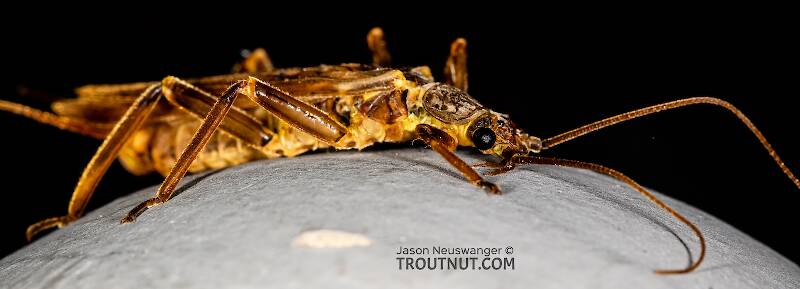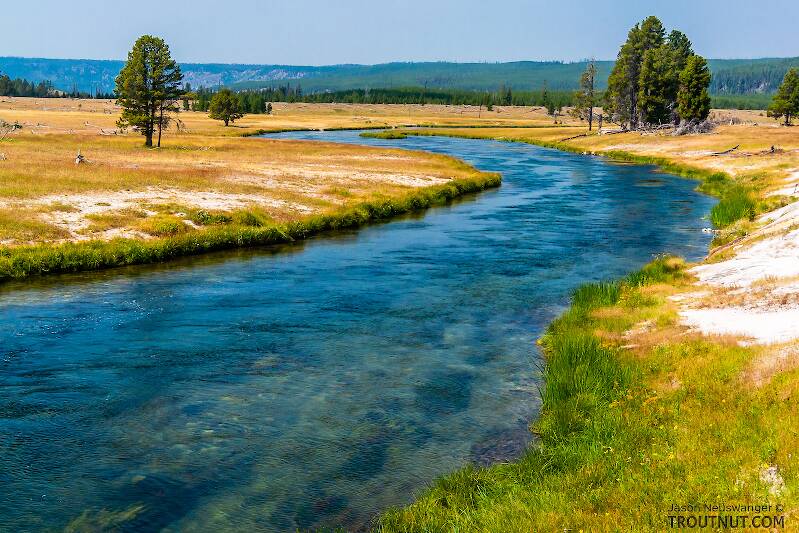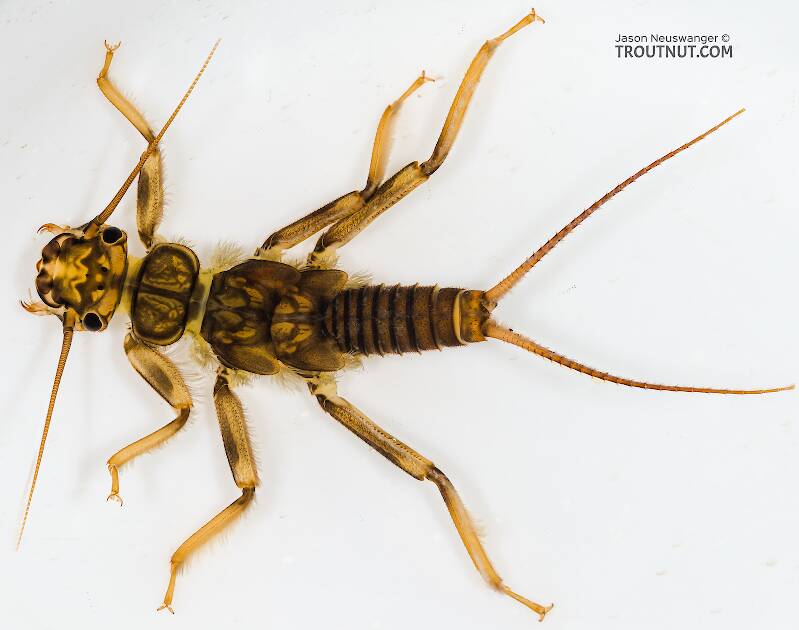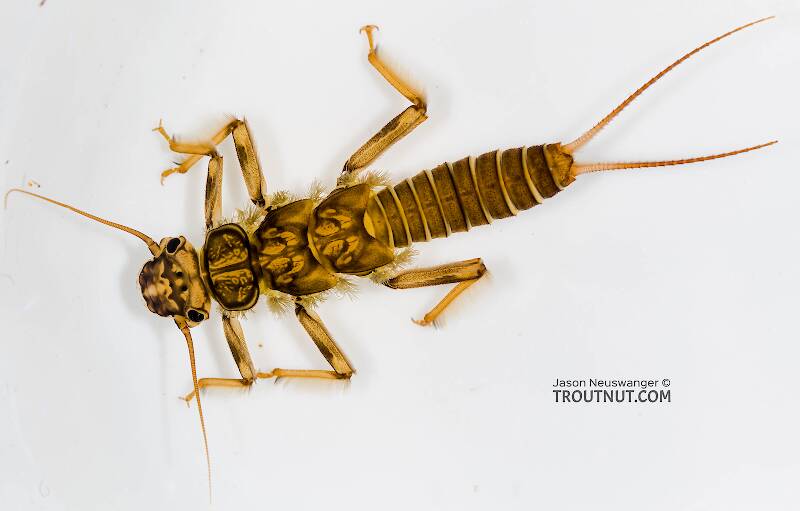
Blue-winged Olives
Baetis
Tiny Baetis mayflies are perhaps the most commonly encountered and imitated by anglers on all American trout streams due to their great abundance, widespread distribution, and trout-friendly emergence habits.
Featured on the forum

This dun emerged from a mature nymph on my desk. Unfortunately its wings didn't perfectly dry out.

Troutnut is a project started in 2003 by salmonid ecologist Jason "Troutnut" Neuswanger to help anglers and
fly tyers unabashedly embrace the entomological side of the sport. Learn more about Troutnut or
support the project for an enhanced experience here.
Stonefly Genus Doroneuria (Golden Stones)
This less common western genus currently has only two species. Doroneuria theodora & Doroneuria baumanni (mostly coastal)
Calineuria and Doroneuria nymphs both lack anal gills and can be confused, but Doroneuria has a ridge of fine hairs running down the center of its body dorsally and is not as dramatically marked. The adults often have very short wings and also lack the striking head markings of Calineuria. The adult males have large quadrangular hammers that are almost twice as long as wide.
Calineuria and Doroneuria nymphs both lack anal gills and can be confused, but Doroneuria has a ridge of fine hairs running down the center of its body dorsally and is not as dramatically marked. The adults often have very short wings and also lack the striking head markings of Calineuria. The adult males have large quadrangular hammers that are almost twice as long as wide.
Genus Range
Identification
To determine whether a specimen of Perlidae belongs to Doroneuria, use the Key to Genera of Perlidae Nymphs.
Specimens of the Stonefly Genus Doroneuria
1 Male Adult

I found this stonefly on some streamside vegetation. I didn't see any in the air in several hours of fishing.
2 Nymphs
Start a Discussion of Doroneuria
Stonefly Genus Doroneuria (Golden Stones)
Taxonomy
Species in Doroneuria: Doroneuria baumanni, Doroneuria theodora



